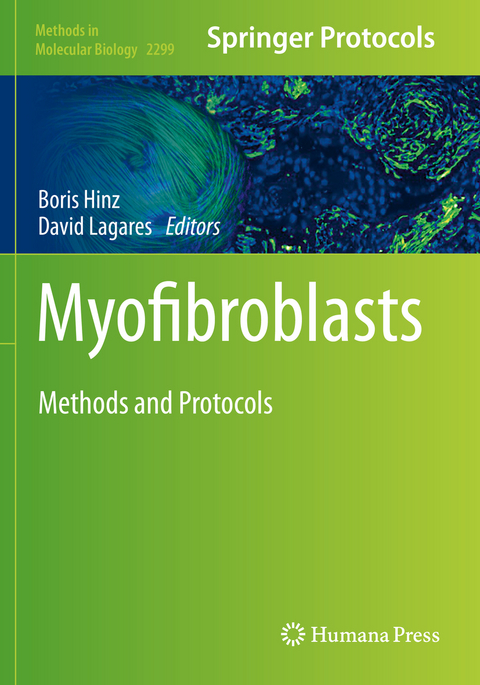
Myofibroblasts
Springer-Verlag New York Inc.
978-1-0716-1384-9 (ISBN)
Authoritative and extensive, Myofibroblasts: Methods and Protocols is an essential collection for researchers delving into the processes and effects of these important cells.
50 Years of Myofibroblasts: How the Myofibroblast Concept Evolved.- Myofibroblast Functions in Tissue Repair and Fibrosis: An Introduction.- Myofibroblast Markers and Microscopy Detection Methods in Cell Culture and Histology.- Fibroblast and Myofibroblast Subtypes: Single Cell Sequencing.- Myofibroblast Adhesome Analysis by Mass Spectrometry.- Myofibroblast TGF-β Activation Measurement In Vitro.- Contraction Measurements Using Three-Dimensional Fibrillar Collagen Gel Lattices.- Techniques to Assess Collagen Synthesis, Deposition, and Cross-Linking In Vitro.- Methods for Studying Myofibroblast Apoptotic Pathways.- Determination of Senescent Myofibroblasts in Precision-Cut Lung Slices.- The Scar-in-a-Jar: In Vitro Fibrosis Model for Anti-Fibrotic Drug Testing.- Why Stress Matters: An Introduction.- Soft Substrate Culture to Mechanically Control Cardiac Myofibroblast Activation.- Quantitative Analysis of Myofibroblast Contraction by Traction Force Microscopy.- Nucleocytoplasmic Shuttlingof the Mechanosensitive Transcription Factors MRTF and YAP/TAZ.- Atomic Force Microscopy for Live-Cell and Hydrogel Measurement.- Method for Investigating Fibroblast Durotaxis.- Decellularized Extracellular Matrix (ECM) as a Model to Study Fibrotic ECM Mechanobiology.- Fibrosis on a Chip for Screening of Anti-Fibrosis Drugs.- Animal and Human Models of Tissue Repair and Fibrosis: An Introduction.- Mouse Models of Lung Fibrosis.- Mouse Models of Kidney Fibrosis.- Mouse Models of Liver Fibrosis.- Mouse Models of Muscle Fibrosis.- Mouse Models of Skin Fibrosis.- Mouse Models of Intestinal Fibrosis.- A Rodent Model of Hypertrophic Scarring: Splinting of Rat Wounds.- Three-Dimensional Model of Hypertrophic Scar Using a Tissue-Engineering Approach.- Methods for the Study of Renal Fibrosis in Human Pluripotent Stem Cell-Derived Kidney Organoids.- Decellularized Human Lung Scaffolds as Complex Three-Dimensional Tissue Culture Models to Study Functional Behavior of Fibroblasts.
| Erscheinungsdatum | 30.05.2022 |
|---|---|
| Reihe/Serie | Methods in Molecular Biology ; 2299 |
| Zusatzinfo | 83 Illustrations, color; 3 Illustrations, black and white; XV, 460 p. 86 illus., 83 illus. in color. |
| Verlagsort | New York, NY |
| Sprache | englisch |
| Maße | 178 x 254 mm |
| Themenwelt | Medizin / Pharmazie ► Medizinische Fachgebiete ► Pharmakologie / Pharmakotherapie |
| Naturwissenschaften ► Biologie ► Mikrobiologie / Immunologie | |
| Naturwissenschaften ► Biologie ► Zellbiologie | |
| Schlagworte | Activated mesenchymal cells • Anti-fibrotic drug discovery • Chronic wound treatment • Fibrotic scars • Pathological fibrosis • Tissue repair • wound healing |
| ISBN-10 | 1-0716-1384-7 / 1071613847 |
| ISBN-13 | 978-1-0716-1384-9 / 9781071613849 |
| Zustand | Neuware |
| Haben Sie eine Frage zum Produkt? |
aus dem Bereich


